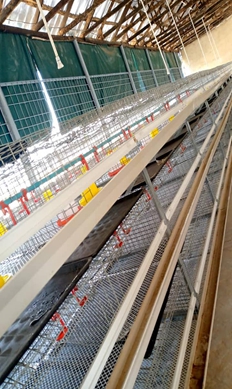Heating Process for Poultry in Preparation for Processing and Packaging
Oct . 01, 2024 08:20 Back to list
Heating Process for Poultry in Preparation for Processing and Packaging
Scalding Tanks in Poultry Processing Importance and Best Practices
In the poultry processing industry, ensuring the quality and safety of meat is of paramount importance. One crucial step in this process is the scalding of birds, which is achieved using scalding tanks. These tanks play an essential role in the preparation of poultry for further processing and ultimately influence the quality of the final product. This article explores the significance of scalding tanks, the process involved, and best practices that should be followed to maintain efficiency and hygiene.
The Significance of Scalding
Scalding serves several critical functions in poultry processing. Firstly, it loosens the feathers, allowing for easier plucking and ultimately contributing to a more efficient processing line. The right temperature and duration of scalding are vital, as improper conditions can lead to excessive or insufficient feather removal. Secondly, scalding helps in reducing microbial load on the birds, thereby improving food safety. When the poultry is subjected to hot water, it can help eliminate bacteria and parasites that may be present on the skin.
The Scalding Process
The scalding process typically involves immersing freshly slaughtered birds in a scalding tank filled with hot water. Generally, the temperature of the water ranges from 140°F to 160°F (60°C to 71°C), although this might vary depending on the specific requirements of the processing facility and the type of poultry being processed. Birds are generally kept in the tank for a specific duration, usually between 30 seconds to a few minutes, based on their size and feather type.
There are two main types of scalding dry and wet. Dry scalding involves exposing the birds to hot air, while wet scalding uses water. Most poultry processing plants employ wet scalding due to its effectiveness in feather removal and microbial reduction.
Best Practices for Scalding Tanks
scalding tank poultry

To ensure that scalding tanks operate effectively and maintain a high standard of hygiene, several best practices should be implemented
1. Temperature Control It's imperative to regularly monitor and maintain the temperature of the scalding water. Use calibrated thermometers to ensure that the water remains within the optimal range. Frequent checks help in identifying any deviations that could affect the scalding process.
2. Water Quality Management Contaminated water can compromise food safety. Regularly testing the scalding water for microbial contamination is vital. Additionally, it’s important to change the water at set intervals to maintain its effectiveness.
3. Time Management Every type of poultry requires a specific scalding time to ensure proper feather loosening while preventing damage to the skin or meat. Establishing standard operating procedures can help ensure consistent quality.
4. Maintenance of Equipment Regular inspections and maintenance of the scalding tanks and associated equipment are crucial. This includes checking for wear and tear, leaks, and ensuring that heating elements are functioning correctly.
5. Training Employees Staff should be trained extensively on the significance of the scalding process and proper handling of equipment. Awareness of hygiene best practices can significantly reduce the risk of contamination.
Conclusion
Scalding tanks are a foundational element of poultry processing, affecting both efficiency and food safety. By understanding the importance of the scalding process and adhering to industry best practices, poultry processors can ensure high-quality products. Maintaining the right temperature, managing water quality, adhering to proper timing, and ensuring the maintenance of equipment are all essential for optimal operations. Ultimately, a well-executed scalding process not only enhances the final product but also supports the health and safety of consumers.
-
Hot Sale 24 & 18 Door Rabbit Cages - Premium Breeding Solutions
NewsJul.25,2025
-
Automatic Feeding Line System Pan Feeder Nipple Drinker - Anping County Yize Metal Products Co., Ltd.
NewsJul.21,2025
-
Automatic Feeding Line System Pan Feeder Nipple Drinker - Anping County Yize Metal Products Co., Ltd.
NewsJul.21,2025
-
Automatic Feeding Line System - Anping Yize | Precision & Nipple
NewsJul.21,2025
-
Automatic Feeding Line System - Anping Yize | Precision & Nipple
NewsJul.21,2025
-
Automatic Feeding Line System-Anping County Yize Metal Products Co., Ltd.|Efficient Feed Distribution&Customized Animal Farming Solutions
NewsJul.21,2025






